Kashi

Kashi or Varanasi is the land of Lord Shiva and people from all over the world wish to make a visit to this holy place once in a lifetime. It is the blessed land for Hindu sacred activities and poojas dedicated to Lord Shiva. In addition, a ritual is a religious ceremony performed to wash-off sins and attain moksha or peaceful living. According to the Hindu scriptures or Hindu mythology, pilgrims who make a visit to Varanasi and perform various rituals in Kashi will attain salvation and one can undergo these Varanasi rituals with the help of experienced pundits
It is also believed that the pilgrims who take a dip in the holy River Ganga will possess moksha (salvation). The water in the holy river Ganga is pure and has the power to wash off all your sins.
The Varanasi Rituals that are performed with the help of best purohit services will make your Kashi yatra complete. So, indulge yourself in the various Varanasi rituals and attain moksha. Also, people who perform Pitrukaryas for the deceased ancestors of their family, the departed souls will attain moksha (mukthi from the cycle of birth and rebirth). Pind Daan in Varanasi is one of the major rituals one can perform in order to free the spirit (Atma) of the departed souls. If you do not perform this Pind Pradan for the deceased ancestors in your family, it is believed that no work will be successfully completed in your list.
Asthi Visarjan
The other ritual called Asti Visarjan in Varanasi is considered as the last ride or farewell to the dead souls. In addition, performing Asthi Visarjan with the best Purohits in Varanasi is considered to be sacred as you will be scattering collected ashes during the cremation in the holy river Ganga. Anna Shradh is also a kind of ritual for the departed souls as the family member will be offering food and the departed souls will consume food in the form of birds.
Tharpanam
Tarpan means to offer Tapa or austerity to their passed parents and all creatures of the universe. It is a great worship of the Brahman and one should be performed daily. The specific period of Tarpan is only to associate you with that sacred knowledge and remembrance of the passed elders. Traditionally Tarpan of Amavasya, Ashtami, and Novmi has a great importance but it is the only ritual.
Rudrabhishek Pooja
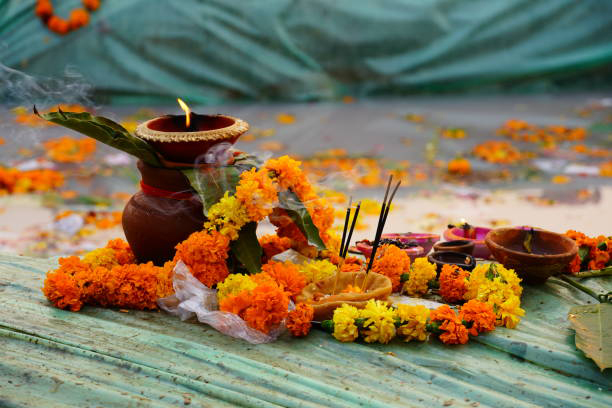
Rudrabhishek is the most comprehensive vidhi of doing Puja to lord Shiva. In this ritual ‘Panch Amrit that consist of ‘Milk, Honey, Ghee, Sugar and Curd’ are offered in a sequence along with the dedicated chanting of Rudram Namakam Chamak Path.
Rudrabhishek Puja is the sacred bath of Lord Shiva done to appease him and seek his divine blessings.When Samudra Manthan was done on the Mandara mountain, then all the Devi Devtas were present there in anticipation of getting the ‘Amrit’ but when the poison came out from the Samudra Manthan nobody was ready to accept it.
Lord Shiva then came and drank the poison thus saving the universe from collapsing. Because of drinking the poison the color of his throat changed to blue and he was named ‘Neelkanth’ by lord Vishnu.
As a result of drinking the venomous poison, the body of Lord Shiva started heating up, and thus to appease him all 33 Koti Devi and Devtas offered Rudrabhisek Puja to lord Shiva and sought his blessings.
Ganga Aarti
Ganga aarti is a magnificent evening ritual in Varanasi that one must not miss. The Aarti or worshipping River Ganga, takes place every day, at dusk. The ceremony is performed by a group of priests on the ghats. Amid blowing of conch shells, the ringing of several bells, the clanging of brass cymbals and the chanting chorus of mantras, Ganga Arti is a Hindu religious ritual of worship or we can say a form of puja, in which light from wicks soaked in ghee (purified butter) or camphor is offered to one or more deities.
The priests venerate Ganga, the lifeline of Varanasi, with brass lamps that rise several tiers. The priests performing the arti are all draped in similar clothing-- a kurta and a dhoti. The preparations for the arti include collecting five elevated planks, an idol of Goddess Ganga, flowers and incense sticks. Rituals of the arti are performed by those learned in Vedas and the Upanishads and are lead by the head priest of the Gangotri Seva Samiti. The arti lasts about 45 minutes. Devotees float smaller diyas on leaf platters in the river as obeisance to the holy Ganga. As the sunlight recedes, the innumerable lamps flowing in the water make for an unforgettable sight. The hour-long ritual can be watched from the ghats or boats moored at the river bank.
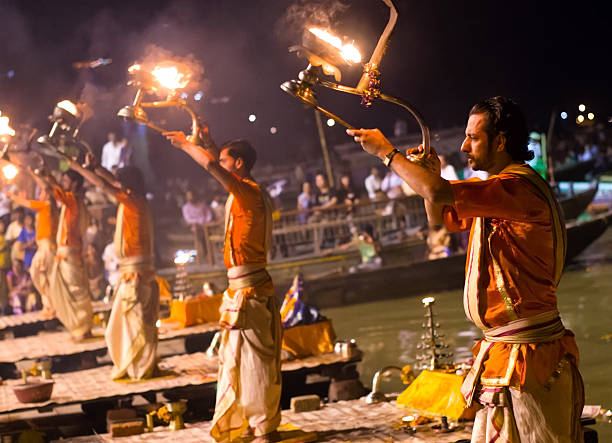
Gaya
Pind Daan
As per the beliefs of Hindus religion its a ritual of paying debt to ancestors that brings salvation, it is also believed that no work can be successfully performed without blessings of ancestors and offering Pind Daan invokes blessings of the dead ancestors.
With the ritual offered to pay tribute to the departed ancestors also called 'Pitar' as per our ancient texts, the sacred and correct ending of this ritual promote the soul to get Moksha (salvation) very easily.
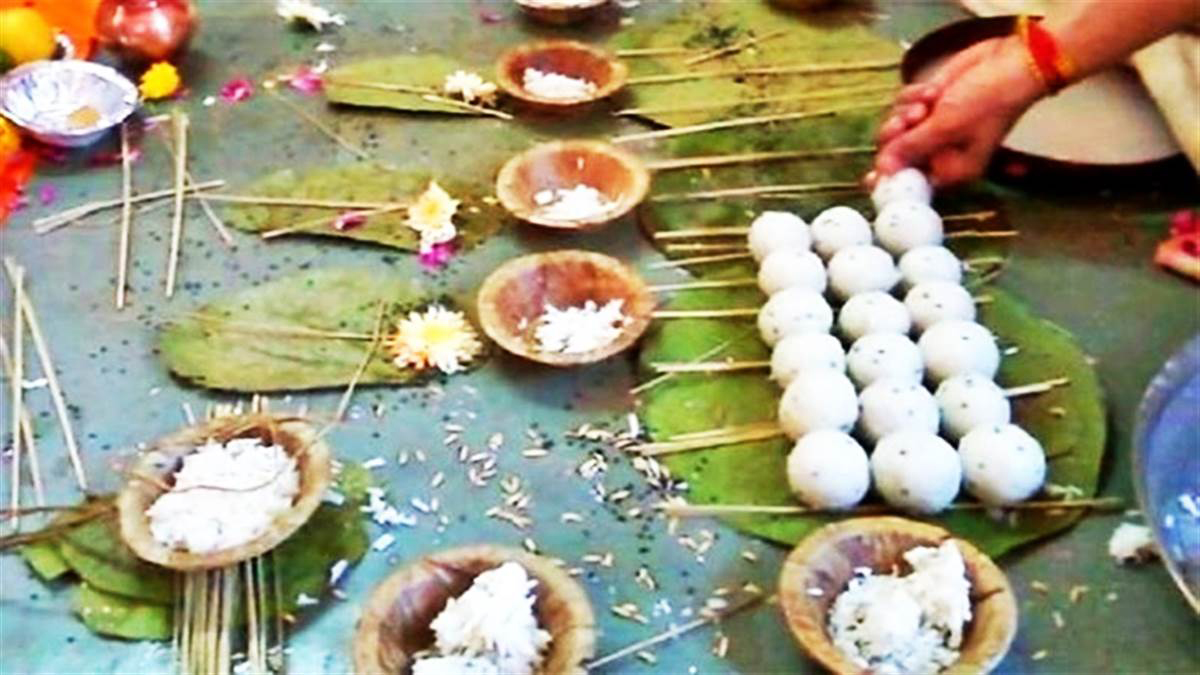
What is Pind Daan
PindDaan is the only religious practice in Hinduism that is dedicated towards the attainment of peace for the departed souls. The practice of PindDaan has been carried out since ancestral times and is considered to be one of the most important rituals in Hinduism. It is believed that Lord Ram started the practice by offering PindDaan for his father, Kind Dashrath at Gaya in the tretayuga i.e. around 12 lakh years ago.The belief that no good deed or individual milestones are considered to be complete without the blessings of the ancestors makes PIndDaan a sacred activity. The ritual is done for solace of the departed family members along with prayers for them to attain higher life up on reincarnation. It is believed that doing PindDaan at particular destinations in the country pleases the souls of the departed and helps in seeking their blessings. Blessings of satiated ancestral spirits bring prosperity and success to all members of the family. PindDaan is considered to be a duty more than a mere ritual for the son of the deceased according to Hindu mythology. The positive effects can be felt by the entire family after successful completion of the ritual at one of the holy places.
Where to perform Pind Daan
Bank of the Holy River “Ganga” anywhere in India. But as per India mostly people perform pind-daan at Gaya Bihar.
Benefit from Pind Daan
It is said that all obstacles in life are smoothened once you perform Pind Daan ritual for your parents or ancestors. There are sudden and quick positive changes observed in life. According to our clients they have observed improvement. It is said that all obstacles in life are smoothened once you perform Pind Daan ritual for your parents or ancestors. There are sudden and quick positive changes observed in life. According to our clients they have observed improvement. We arrange rituals for the peace of ancestor's soul.
Shastri (Priest)
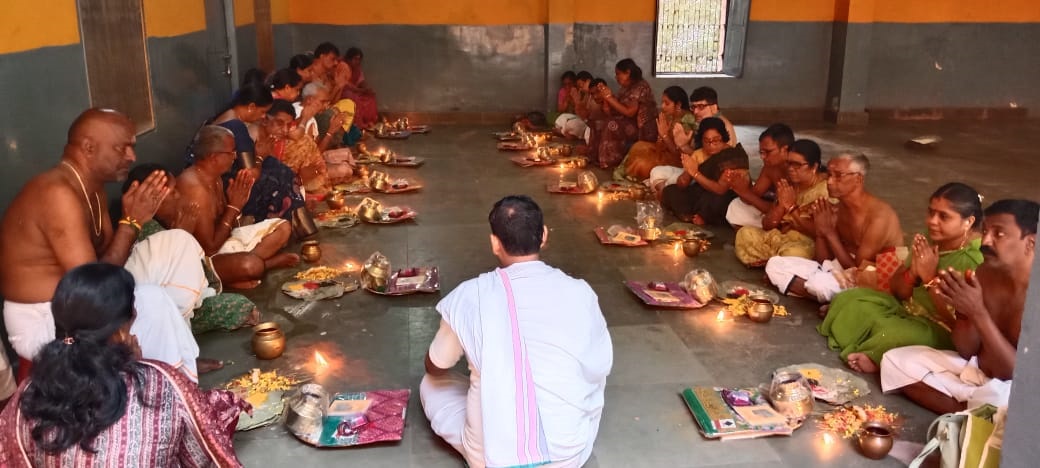
We have experienced and knowledgeable shastri (Priest) who can help you to perform all kind of ancestral ceremonies like Tripindi Shradh, Pind Daan, Tarpan Pooja in Kashi, Prayagraj (Triveni Sangam) & in Gaya (at Vishnupad Temple). We also provide Hindi, Tamil, Telugu, Kannada Speaking Shastri for Pind Daan ritual in Gaya and Kashi.
Allahabad (Prayagraj)
Triveni Sangam
As the sun rises across the Triveni Sangam in Allahabad, devotees line up the Ghats to offer their prayers to Goddess Ganga and seek her blessings. True to its name, the Triveni Sangam which is believed to be a confluence of three rivers, the mighty Ganges, Yamuna and the mythological Saraswati comes alive with the first break of light. Devotees have firm faith in the healing waters of Triveni Sangam and believe that one is freed from the cycle of rebirths if a bath is taken at the Sangam.
Veni Pooja/Thambathi Pooja
Veni Daan Pooja in Prayagraj triveni sangam. The Veni Daan (donation of braided hair) is something that is unique to this place. The husband braids his wife’s hair and then cuts a small portion of it as an offering to pray for a long healthy life together. During a Hindu marriage, the couple promise to spend seven lifetimes together. This promise is further gets strengthened by Veni Daan. All the rituals performed during the marriage are carried out once again during Veni Daan.
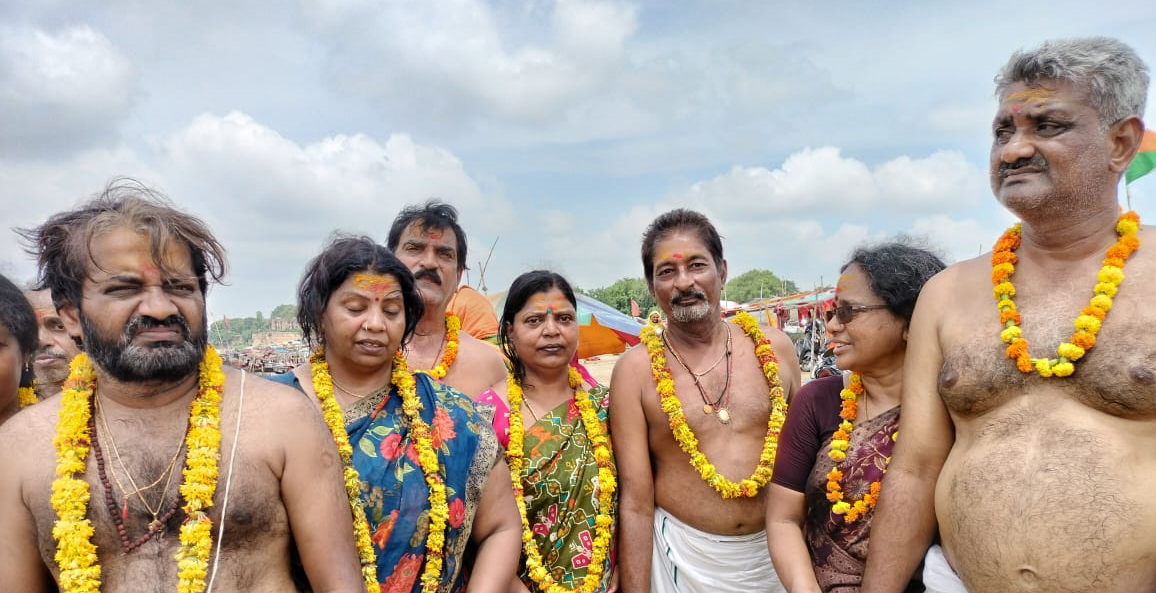
Ayodhya
The city of Ayodhya is an important pilgrim place for Hindus in India. It is one of the seven holiest cities of India. Ayodhya is the birthplace of Lord Ram, who is an important deity in the Hindu pantheon. This small, quiet town attracts pilgrims from all over the country. Hindu pilgrims visiting Ayodhya during festivals and important religious functions consider a holy dip in the sacred Saryu River very auspicious. Ayodhya city was the capital of the ancient kingdom of Ayodhya, where Lord Ram was born. It is also mentioned in Hindu mythology and the Ramayana. The ancient scripture of Atharvaveda describes Ayodhya as 'a city built by gods' and compares its prosperity with the glory and splendor of the paradise.
